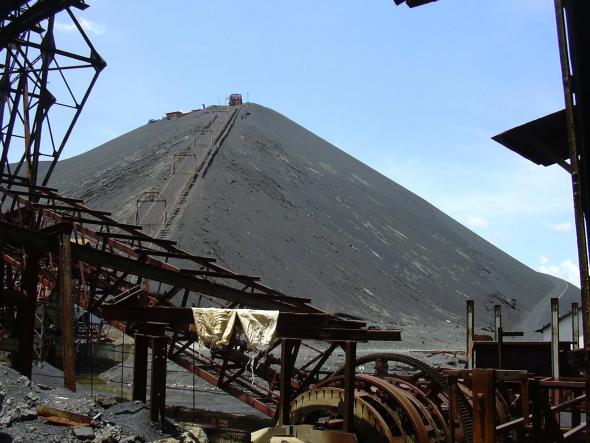Encounters PICHA Biennale Lubumbashi Biennal
From 13th to 17th October 2010
Curated by Simon Njami
2010 marks half a century of the independence of 17 African countries including the Democratic Republic of Congo. The celebration coincides with one hundred years of the foundation of Lubumbashi. Celebrating one hundred years of Lubumbashi means that one recalls half a century of industrial and colonial activities which were sustained by strong segregation whose marks can be noticed in the urban planning (see the works of Johan Lagae) and the social unrest that broke out after the Second World War. But the last fifty years also marked the “nationalization” of the city after independence. The independence of the Congo witnessed tensions between different groups which resulted among others to the Katangese secession eleven days after Belgium officially granted the Congo independence. Lubumbashi therefore became the capital of a state whose main goal was to perpetuate western industrialists economic interests and of the Union Minière du Haut Katanga. This history started ± 50 years ago since the assassination of Patrice Lumumba on the 17th of January 1961 up to the time Mzee Kabila took up the power through a statement rebellion movement.
 Industrial waste land of Lubumbashi factories and slag heap. photo by Sammy BalojiEstablished during the hosting of the first edition of Picha Encounters in June 2008, PICHA association (meaning image in Swahili) is carrying the project, a biennal gathering around exhibition and screenings international photographers and video artists. It is chaired by the photographer and video artist Sammy Baloji and offers a place of exchange between professionals and local artists.
Industrial waste land of Lubumbashi factories and slag heap. photo by Sammy BalojiEstablished during the hosting of the first edition of Picha Encounters in June 2008, PICHA association (meaning image in Swahili) is carrying the project, a biennal gathering around exhibition and screenings international photographers and video artists. It is chaired by the photographer and video artist Sammy Baloji and offers a place of exchange between professionals and local artists.
Main achievements in 2009-2010: organization of workshops for artists training, as well as exhibitions; promotion of women artists in the rural area, at Makwacha village; work toward the reappropriation of Kantaga Region tangible and non tangible heritage; artistic coordination of the Salama Atelier silkscreen printing; an art center in Lubumbashi.
In 2008, PICHA association organized the first edition of the Biennal. The event was hosted in different venues in the city: the Town Hall, the French Cultural Center, the Museum, the Greec Community. It counted 16 exhibitions, 40 screenings, 11 video installations, 20 well known artists. The first edition allowed the population to discover another facet of photography and video.
In 2010, Lubumbashi city will host the second edition of Picha Encounters. The art concept will deal with its urban planning, architecture, population in a journey that would plunge the viewer into old times through contemporary productions. The places of exhibition will be selected according to the interaction possibility of daily life and the population so that the exhibition would go toward the public and not the contrary as it often happens. The most used media would be photography, films and video as well as temporary set up and performance.
The concept is to turn Lubumbashi into a “small Africa” in which the main regions of the continent would be represented. So selected artists would show us their works which would be in line with both local and wide history in order to show that the memory we are talking about is polysemic.
During five days, the city will be transformed in a big patchwork that will receive the art works from the following artists (subject to confirmation), selected by Simon Njami: Adama Bamba (Mali), Dimitri Fagbohoun (Togo), Jellel Gasteli (Tunisia), Kiluanji Kia Henda (Angola), Kiripi Katembo Siku (D.R.Congo), Mouna Karray (Tunisia), Pierrot Men (Madagascar), Zineb Sedira (Algeria), Zwelethu Mthethwa (South Africa) in photography; Bili Bidjocka (Cameroon), Jimmy Ogonga (Kenya), Kader Attia (Algeria), Moataz Nasr (Egypt), Myriam Muhindou (Gabon) in video art.
An itinerary will take the visitors to venues full of history, and three topics will be developed:
• neutral area remembering the demarcation between the “white” city and the “black” city in the urban planning during the colonial time,
• power for the three kind of authority that has structured the city and the society in Lubumbashi during the colonial time as well as during the 50 years of independence (religious, economical, political),
• culture along a route of buildings which are diverted from their original mission of cultural diffusion or in state of decay.
For the screenings of video art or installations, the audience will be welcomed in the following venues during five evenings: the Salama field, the Kamalondo Theatre, the Sainte Marie Basilica, the National Museum, the Courthouse.
Contact : Avenue Adoula 588, Lubumbashi
Alexandre Mulongo Finkelstein, Responsable de communication
+243 81 07 23 284, +243 99 77 26 984